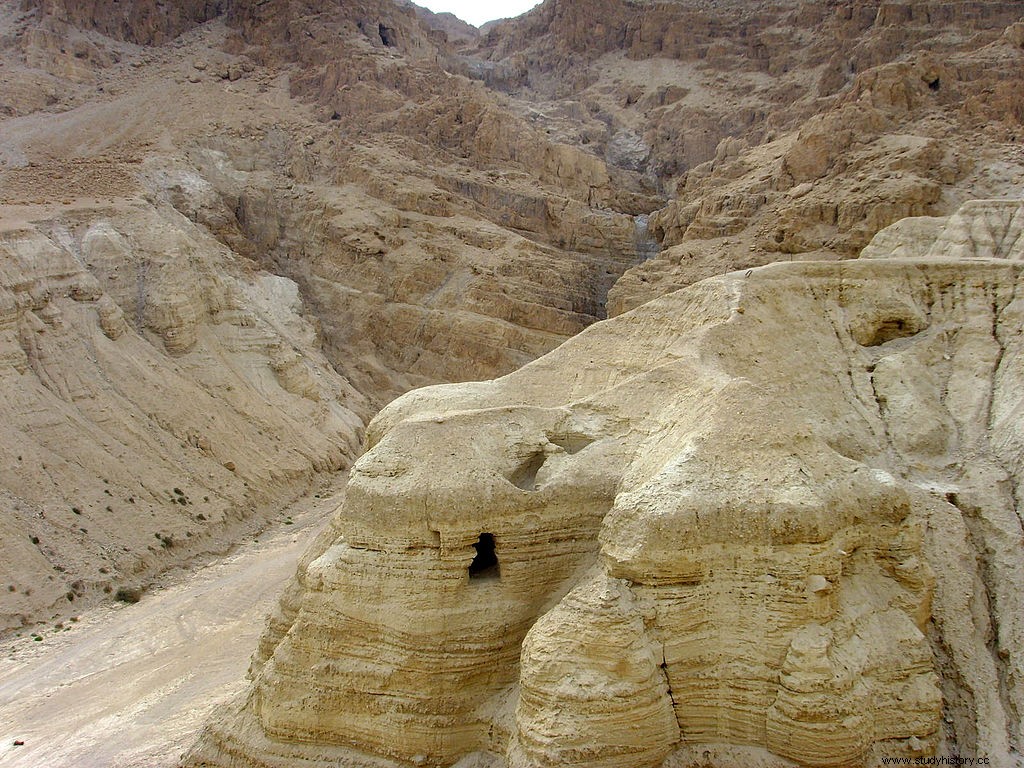1945 marks the end of the Second World War. Following the trauma suffered, the Jews who survived decided, in order to no longer relive the horrors of the Holocaust, to create a state. In 1947, the founding of the State of Israel was more than in talks; so when the Dead Sea Scrolls are discovered, they are of paramount importance to the Jewish state. Indeed at the I st century, Jews, persecuted by Emperor Titus who destroyed the Temple of Jerusalem, fled. They barely have time to take precious religious manuscripts and settle on the shores of the Dead Sea, in caves.
1947

Characters
William Albright
Mohammed edh-Dhib Hassan
Khalil Iskander Schahin, known as Kando
Eleazar Sukenik
Mar Athanasse
Procedure
During the winter of 1947, six months before the creation of the State of Israel, the shepherd Mohammed Edh-Dhib Hassan and his brother accidentally discovered rolls of old manuscripts, written on parchment and papyrus, packed in rolls of leather and hidden in the cave of Qumran, in the present-day West Bank, two kilometers from the Dead Sea. Intrigued, they bring them to an antique dealer nicknamed Kando who shows them to Mar Athanasse, Metropolitan (Bishop) of Jerusalem. The latter sends photos to archaeologist William Albright who assesses them as revolutionary archaeological discoveries.
Indeed, these thousands of manuscript fragments were written between the III th and the I st century in Aramaic, Hebrew and some in Greek. Some contain the Old Testament and in particular the entire Book of Isaiah (dating from the 2 th century BC). Others are apocryphal texts (excluded from the canonical bible), such as the Book of Giants or rules of life, no doubt belonging to the people who had come to live there, as indicated by the exhumation of 33 skeletons found in 2016. Eléazar Sukenik, archaeologist and professor at the Hebrew University of Jerusalem, alerted the Jewish State to acquire these manuscripts. A real chase then began between researchers and Bedouins to find these precious writings, as much for their pecuniary, political, historical and spiritual importance. Between 1947 and 1956, 900 scrolls were discovered in eleven caves.
Consequences
The Dead Sea Scrolls are the oldest copies of the Hebrew Bible. Before this discovery, the oldest manuscript in Hebrew dates back to the Middle Ages! From a cultural point of view, these manuscripts are the oldest written testimonies revealing the language used in Judea (coins, pottery, etc., excepted). Some are written in Aramaic, the language Jesus spoke, when it was thought that Hebrew was more widely spoken than Aramaic! Two alphabets intersect here. Some manuscripts are written with the "Paleo Hebrew" alphabet, inherited from the Phoenicians, and other manuscripts with the Judean alphabet, proof that the scribes who wrote these manuscripts still mastered both. In 2017, a twelfth cave revealed a parchment, unfortunately blank, pottery and a piece of carnelian seal (precious stone). The rest had been looted. There is no doubt that the Judean Desert still has many secrets to reveal.
